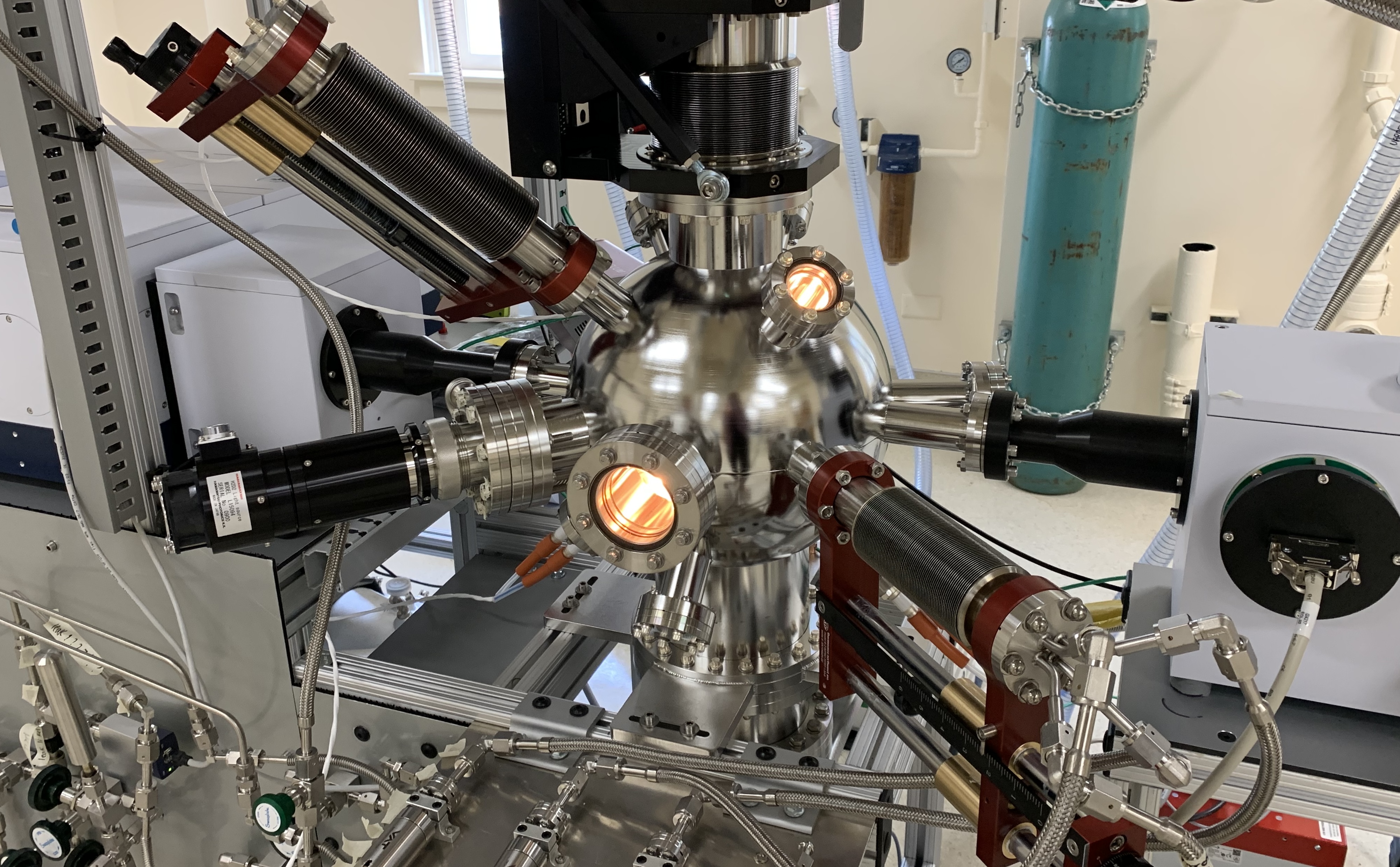
C
2H, HCN, and C
18O emission maps observed towards the protoplanetary disk HD 163296 with ALMA.
We aim to determine how key volatile elements like C, N, and O are incorporated into planets by characterizing the abundance and distribution of volatile molecules in protoplanetary disks, and how these evolve over the timescales of planet formation. Using millimeter and IR telescopes like ALMA and JWST, we can now access both the gas and ice reservoirs available to forming planets.

Our ice chemistry setup at UC Berkeley.
In cold interstellar regions, most volatiles condense onto dust grains to form icy mantles. Understanding the chemistry of these astrophysical ices is of fundamental importance: not only are ices the major reservoir of volatiles in star-forming regions, but they are also the primary sites where organic molecules can form. In our lab we recreate the conditions of extremely low temperature and pressure needed to explore the reactivity of ice-phase molecules and understand the origins of astrochemical complexity.

Artist's impression of `Oumuamua outgassing H
2 as it approaches the sun.
Interstellar ices exhibit an amorphous, disordered structure which impacts their microphysical behaviors like desorption and entrapment. Ice microphysics influences the distribution of volatile molecules in planet-forming environments, and can even affect the macroscopic behavior of icy planetesimals. We recently showed that the peculiar behavior of the first known interstellar object, 1I/'Oumuamua, can be explained by outgassing of molecular hydrogen that was formed and entrapped within an amorphous water-dominated ice.

ALMA 1.3mm spectrum of a young protostellar disk showing emission lines from various complex organic molecules.
Star-forming regions are host to a surprisingly rich organic chemistry. It has long been suspected that this inventory of interstellar organic molecules could seed young planets with building blocks for prebiotic chemistry. We use powerful millimeter telescopes to understand how chemical complexity emerges and evolves in protostellar and protoplanetary disk environments. We also use simulations to explore how organic material can survive the chaotic journey from the interstellar medium to planetesimals.



